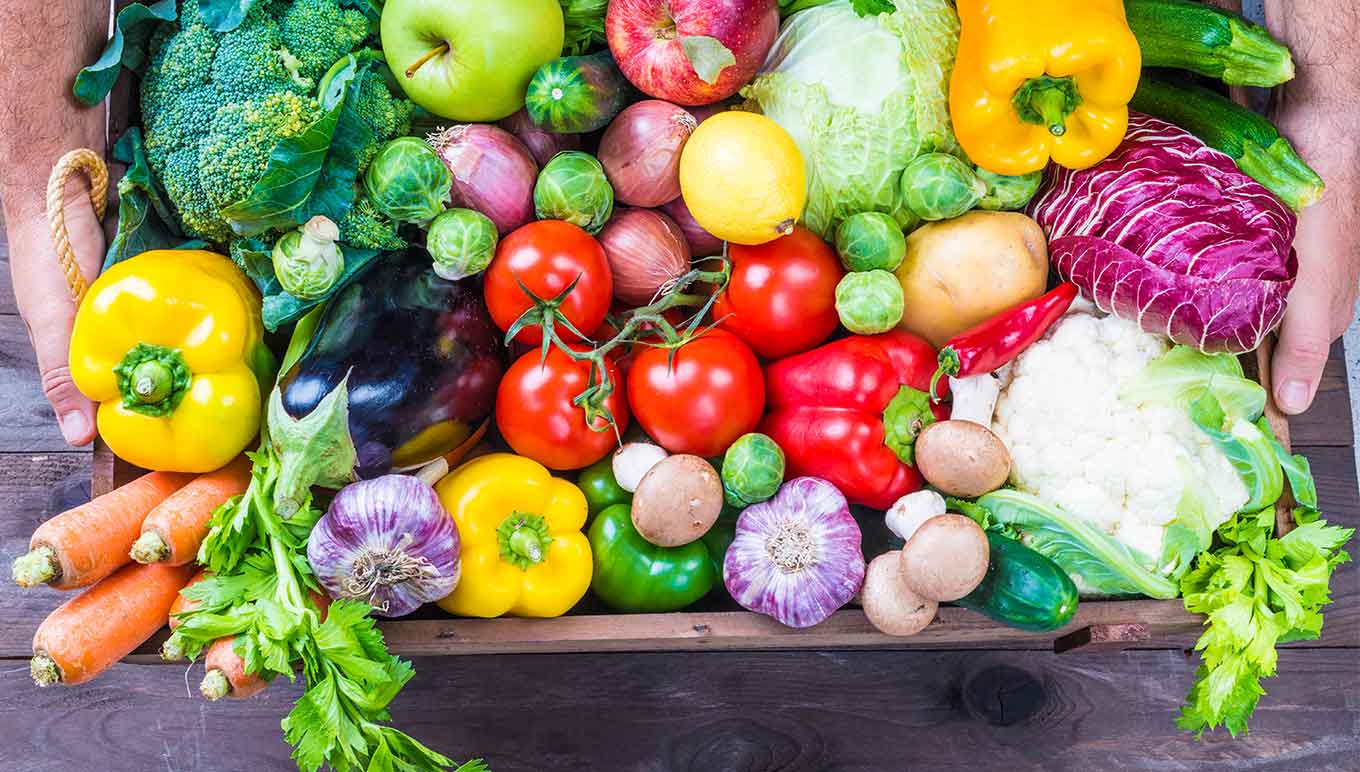Outsmarting Climate Disruption in the Fresh Produce Supply Chain
Outsmarting Climate Disruption in the Fresh Produce Supply Chain
Outsmarting Climate Disruption in the Fresh Produce Supply Chain
May 29, 2025
 Aptean Staff Writer
Aptean Staff Writer 
Extreme weather events that once occurred every decade now happen every season.
Industry insiders know this better than anyone. Recently, senior executives from major food companies released an anonymous memo through Inside Track x Food. The memo warned that commercial threats from climate disruption are greater than most companies publicly acknowledge.
These concerns aren't coming from environmental activists; they’re from business leaders worried about supply continuity and long-term viability. Crop failures, quality issues and price volatility are a persistent challenge—one that food and beverage companies can only tackle by increasing supply chain resilience.
Vulnerability of Key Crops
Evidence of climate vulnerability is already apparent across multiple fresh produce categories, including:
Bananas (Latin America): 73% of EU banana imports and 76% of U.S. imports come from Latin American countries. Recent data from RaboResearch shows yields in Colombia are declining as rising temperatures lead to more banana plants being destroyed by “black leaf streak.” Extreme rainfall events are also causing root diseases and plant damage.
Citrus (USA): Florida's citrus industry is being impacted by higher average temperatures and increasingly intense hurricane patterns. In 2024, Hurricane Milton destroyed 70% of the state's most productive acreage. The impact is so severe that Alico Inc., one of America's largest orange growers, recently announced it is exiting the citrus business entirely.
Cocoa (Africa): West Africa, which produces 70% of the global cocoa supply, is experiencing prolonged dry seasons. In Ghana and Côte d'Ivoire, average temperatures have risen by 1.8° F (1° C) over the past decade, while annual rainfall patterns have become erratic. These changes have made 65% of farms more vulnerable to cocoa swollen shoot virus (CSSV) and black pod disease.
Corn (Europe and USA): The 2024 corn harvest was affected by record heat waves across multiple growing regions. In the U.S. Midwest, 21 consecutive days of temperatures above 95° F (35° C) reduced yields by 31%. In Ukraine, prolonged drought conditions have resulted in soil moisture levels 40% below normal, forcing many farmers to shift to more drought-tolerant crops like sunflowers.
Pears (USA): The Northwest U.S. recently experienced its smallest pear crop in 40 years. A historic deep freeze saw temperatures plummet to -15° F (-26° C) for five consecutive days. The Bosc variety was worst affected, with production down 60%.
Building a Climate Resilience Strategy
As the examples we've shared demonstrate, climate volatility is significantly impacting fresh produce yields. For food growers, packers, shippers and distributors, a systematic approach combining technology, diversification and communication is essential to increasing supply chain resilience.
Here are five practical steps your fresh produce organization can take to strengthen your supply chain against environmental disruptions:
1. Assess Your Vulnerability Points
Conduct a thorough assessment of your product portfolio and growing regions through a climate risk lens. Understand how each crop variety responds to specific temperature ranges, rainfall patterns and humidity levels.
Industry averages offer a useful starting point for understanding climate impact. But for maximum accuracy, you need to collect and store your own crop data.
A specialized produce enterprise resource planning (ERP) system is an ideal repository for this information, helping you to establish thresholds where yield or quality begins to decline based on growing conditions.
2. Centralize Your Supply Chain Data
The real power of climate data comes from integration with wider supply chain information.
Your ERP system can serve as the central hub for combining environmental data with inventory levels, shipping schedules, customer commitments and other critical information. This unified view will enable you to understand how weather events affect your entire operation, so you can make informed growing and sourcing decisions.
3. Diversify Your Sourcing Strategy
Single-region sourcing carries significant risks. Developing relationships with growers in multiple locations can help you maintain customer continuity when regional weather events strike.
For example, several major banana importers have cultivated relationships with African growers, creating natural protection against climate disruptions in Latin America.
Managing multi-region sourcing arrangements requires sophisticated systems. Your ERP software can track product quality, availability and pricing across numerous growing regions simultaneously.
Advanced fresh produce ERP systems can also combine forecast data with customer orders to anticipate sourcing needs in advance. This foresight gives you crucial lead time to negotiate with alternative suppliers.
4. Develop Rapid Response Systems
Even with the best forecasting, unexpected climate events will occur. When extreme conditions hit, your response time determines whether you face a minor disruption or a major crisis.
The most resilient food and beverage companies collect real-time assessments from growers and logistics partners as soon as climate events occur. Running this data through your produce ERP system will help you quickly identify and secure alternative goods. For example, after Hurricane Milton, leading distributors upheld their retail contracts by quickly sourcing citrus fruits from Spain, Morocco and Egypt.
Your ERP can also mitigate financial losses from lower-grade inventory, redirecting it to appropriate market channels based on its best use case.
5. Communicate With Your Customers
Openly communicating climate challenges and sharing mitigation strategies with your customers will demonstrate you’re a reliable, prepared partner.
The best fresh produce ERP systems include partner portals that enable real-time communication across your network. These portals are a place for you to securely share forecasts, inventory data and climate insights with suppliers, logistics partners and customers.
A connected fresh produce software ecosystem enables faster and more coordinated responses than fragmented systems. This helps you reassure customers that, despite volatile conditions, their order is under control.
Outsmart Climate Challenges With Food Supply Chain Software
While underprepared competitors will scramble during climate disruptions, companies with resilient supply chains are poised to capture their customers and market share. Aptean helps companies increase this resilience with software and insights specifically for the fresh produce vertical.
Our latest eBook, Transforming the Fresh Produce Supply Chain, reveals how market leaders are tackling critical challenges like perishability and weather volatility using industry-specific software.
Download your free supply chain eBook now for expert insights.
Master your end-to-end food quality management
If you’re ready to take your food or beverage business to the next level, we’d love to help.



